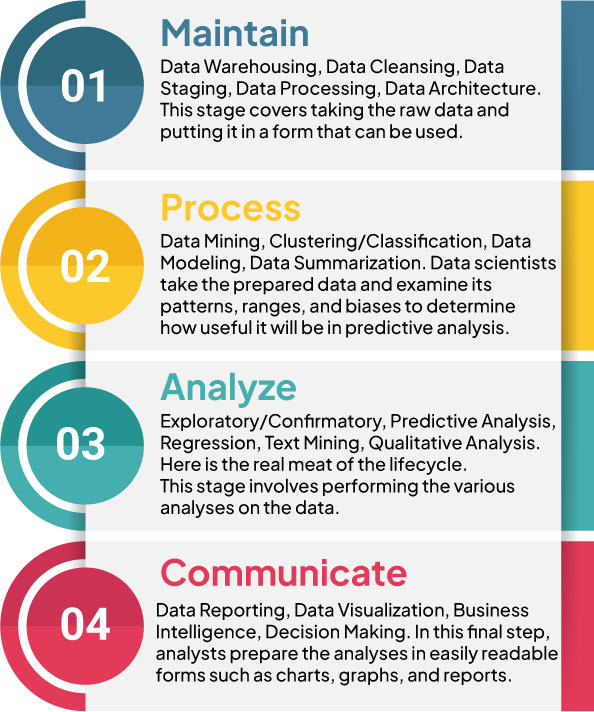Data science is an interdisciplinary field that involves using statistical, computational, and analytical techniques to extract insights and knowledge from data. It involves a combination of skills in programming, statistics, machine learning, and domain expertise to solve complex problems and make data-driven decisions.
The language used is SQL. Much of the world's data is stored in databases. SQL (Structured Query Language) is a domain-specific language that allows programmers to communicate with, edit and extract data from databases. Having a working knowledge of databases and SQL is a must if you want to become a data scientist.
- Data Collection Gathering data from various sources, such as databases, APIs, or external websites.
- Data Cleaning and Preprocessing Preparing the data for analysis by removing outliers, filling in missing values, and transforming the data to a usable format.
- Data Exploration and Visualization Exploring the data using statistical techniques and visualizations to gain insights and identify patterns.
- Feature Engineering Creating new features from existing data to improve the performance of machine learning models.
- Machine Learning Model Development Building predictive models using algorithms such as linear regression, decision trees, or neural networks.
- Model Evaluation and Tuning Evaluating the performance of the model and fine-tuning it to improve its accuracy.
- Deployment and Maintenance Implementing the model in a production environment and maintaining it over time.
Data science is used in a wide range of applications, such as fraud detection, recommendation systems, natural language processing, image and speech recognition, and predictive maintenance. The field is constantly evolving with new technologies and techniques emerging all the time, making it an exciting area for innovation and discovery.

- Domain knowledge
- Math and Statistics Skills
- Computer Science
- Communication and Visualization
Now that you know what data science is, next let us focus on the data science lifecycle. Data science’s lifecycle consists of five distinct stages, each with its own tasks
Capture: Data Acquisition, Data Entry, Signal Reception, Data Extraction. This stage involves gathering raw structured and unstructured data.




